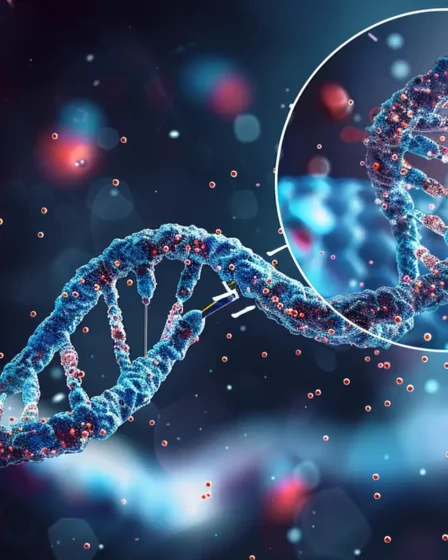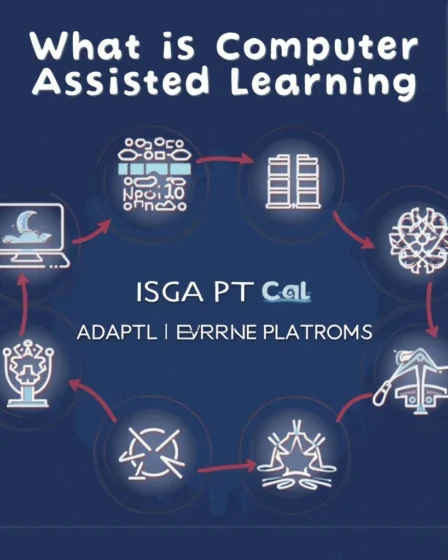When you sprint, your muscles need energy fast. To keep up, your cells rapidly break down glucose into ATP, the fuel that powers movement. This process, called glycolysis, happens in all living cells, whether oxygen is present or not. Even yeast and bacteria rely on glucose breakdown to survive in low-oxygen conditions. This guide explaisystematically …
Krebs Cycle: Step-by-Step Breakdown of the Citric Acid Cycle
Every time you walk, eat, or think, your cells extract energy from food. Inside mitochondria, a series of chemical reactions breaks down nutrients, releasing energy for ATP production. This process, known as the Krebs cycle, converts carbon-based molecules into usable energy, keeping cells active and functioning. The Krebs cycle, also called the citric acid cycle, …
DNA Polymerase in Eukaryotic and Prokaryotic Cells
DNA replication happens billions of times per second, ensuring every new cell gets an exact copy of genetic material. A single mistake in this process can lead to mutations, yet cells maintain accuracy through specialized enzymes. DNA polymerase builds new DNA strands, proofreads them, and corrects errors to keep genetic information intact. This study guide …
Mutation in DNA: Types, Causes, and Effects Explained
Bacteria develop antibiotic resistance through mutation, allowing them to survive drugs that once killed them. This genetic change spreads, making infections harder to treat. In humans, a mutation in the lactase gene allows some adults to digest milk, unlike most mammals. These genetic changes shape how organisms adapt and survive. A mutation is a permanent …
The Evolution and Impact of Computer Assisted Learning in Modern Education
What is Computer Assisted Learning? Definition and Features Computer Assisted Learning (CAL) uses computer technology to enhance and support the learning process. It relies on software, hardware, and digital platforms to create educational experiences that are engaging and interactive. CAL includes features like real-time feedback, multimedia content, interactivity, and personalized learning paths designed to meet …
Antigen Function: How Immune Cells Identify Foreign Molecules
Your immune system constantly scans for harmful invaders. How does it recognize them? Antigen acts as molecular fingerprints, allowing immune cells to distinguish between harmful and harmless substances. These molecules trigger responses that protect the body from infections and diseases. This guide explains antigens, how they interact with immune cells, and how B cells and …
What Are Chromosomes and How Do They Affect Genetics?
Have you ever wondered why children inherit traits from their parents, like eye color or height? The answer lies in chromosomes, the thread-like structures inside cells that carry genetic instructions. Each parent passes down 23 chromosomes, forming the unique blueprint that shapes every individual. This study guide explains chromosomes, the XY chromosome system that determines …
DNA Structure: Understanding the Double-Strand Helix
DNA profiling helps solve crimes by matching biological traces to individuals. Investigators can identify suspects from tiny samples, like hair or skin cells, even decades after a crime. This method relies on DNA’s unique structure, which stores genetic instructions in every cell. This study guide explains how DNA determines inherited traits and controls cell functions. …
Nucleotide – The Building Blocks of DNA and RNA
Cells function like precise assembly lines, constantly producing molecules essential for life. Just as a factory needs raw materials, cells depend on nucleotides to build DNA and RNA. These molecules store genetic instructions and direct protein synthesis. Every living organism—from bacteria to humans—relies on nucleotides to grow, repair, and reproduce. Nucleotides consist of a nitrogenous …
Cell Organelles: The Key Components of Cell Structure
A cell structure functions like a well-organized factory. Conveyor belts transport materials, power stations generate energy, and recycling units handle waste. Just as every factory has specialized departments, a cell has organelles, each performing a specific task. The cell couldn’t function without them, just as a factory cannot operate without machinery. This study guide covers …









